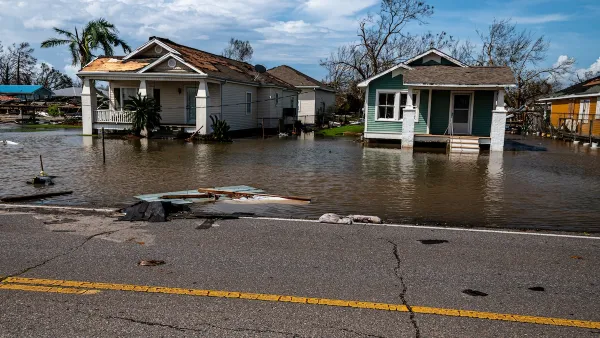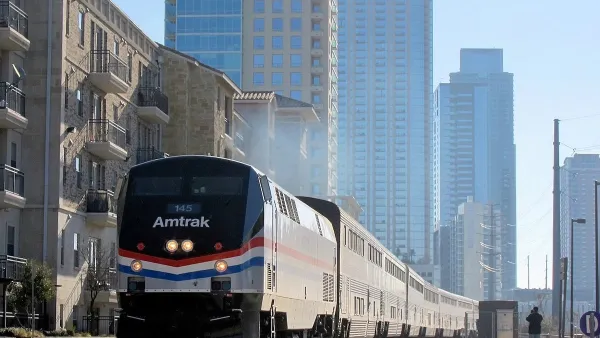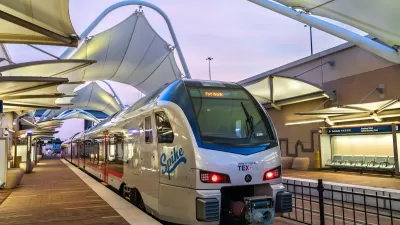The President’s proposed budget could cut key resources for active transportation, public transit, and road safety programs.

In an explainer for Transportation for America, Benito Pérez outlines the potential impacts on transportation of the President’s proposed Fiscal Year 26 ‘Skinny Budget.’
While, at first glance, the budget appears to have little impact on transportation, Pérez argues that “a closer look reveals that the budget, if implemented, stands to have outsized funding impacts on programs tied to Complete Streets, active transportation, transit, transportation electrification, and capacity building.”
According to Pérez, although transportation spending remains largely unchanged in the proposal, the lack of reference to certain programs such as Complete Streets and passenger rail “seems to strongly suggest that these programs are not priorities for the administration,” and the framework rescinds over $4 billion in IIJA funds.
Meanwhile, a proposal to eliminate the CDC’s National Center for Chronic Disease Prevention and Health Promotion, which supports Complete Streets programs, would eliminate crucial resources for local governments. “Lastly, the budget framework further targets investments and tax credits that support the growth and transition to electric vehicles, cutting more than $15 billion in IIJA funding from the Department of Energy.”
A more detailed version of the budget must be approved by Congress.
FULL STORY: The “skinny” FY26 budget framework impacts transportation more than meets the eye

Planetizen Federal Action Tracker
A weekly monitor of how Trump’s orders and actions are impacting planners and planning in America.

Vehicle-related Deaths Drop 29% in Richmond, VA
The seventh year of the city's Vision Zero strategy also cut the number of people killed in alcohol-related crashes by half.

As Trump Phases Out FEMA, Is It Time to Flee the Floodplains?
With less federal funding available for disaster relief efforts, the need to relocate at-risk communities is more urgent than ever.

A Case for Universal Rental Assistance
A pair of researchers argues that expanding rental assistance programs for low-income households is the most effective way to alleviate the housing crisis.

Office Conversions Have Increased Every Year This Decade
Since the pandemic, office vacancy rates remain high, leading many cities to adjust zoning codes to accommodate adaptive reuse.

Index Measures Impact of Heat on Pedestrian Activity
When heat and humidity are high, people are more likely to opt for cars when possible.
Urban Design for Planners 1: Software Tools
This six-course series explores essential urban design concepts using open source software and equips planners with the tools they need to participate fully in the urban design process.
Planning for Universal Design
Learn the tools for implementing Universal Design in planning regulations.
JM Goldson LLC
Custer County Colorado
Sarasota County Government
City of Camden Redevelopment Agency
City of Astoria
Transportation Research & Education Center (TREC) at Portland State University
Camden Redevelopment Agency
City of Claremont
Municipality of Princeton (NJ)





























